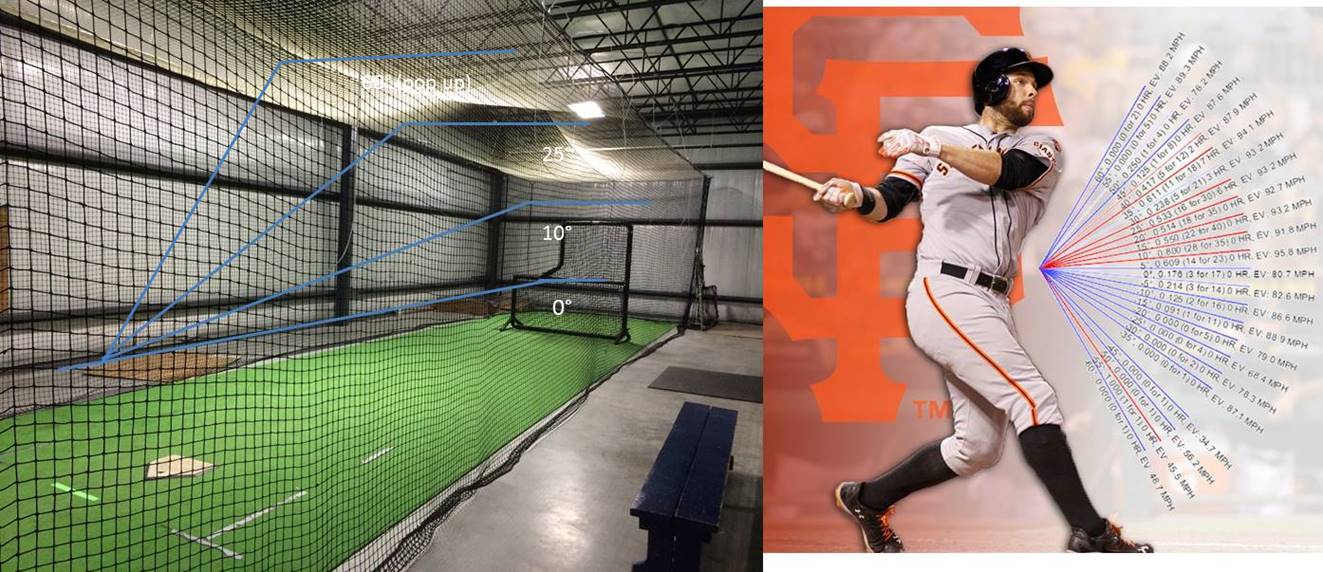The visual reference of the cage 2 posts above tells me that the old phrase "back of the cage son" pretty much takes care of the need to mark launch angles on sides of cages. A ball that makes its way to the back of the cage or at least beyond the L screen before contacting the top of cage has always been what I've asked my son for in the cage!....this thread kinda reinforces what I've told him since little league!lol....edit: before you take me to task for the exactness of the location described above vs the lines in blue, lighten up....just comparing old school "success" for me with my son to new school lines on the cage!
yes but back of the Cage is just the BOTTOM of the desired Launch angle range (and only if you hit over the Screen, if you hit through the "L" hole it is lower).
don't Forget that a Level line drive (aimed against the Screen ) on the field will bounce roughly around the pitchers Mound due to gravity. even a plus 5 degree hit at 90 MPH will only travel like 130 feet, so it is essentially a hard one hopper to short or a shoelace line drive.
MLB statcast thus has liners from 10-25 degrees.
you don't want to hit the top of the Cage 10 feet in front of home plate obviously, but a batted ball that hits the top of the Cage about 20 feet away from home plate is pretty much an ideal Launch angle.
Actually a ball hit at a 30 degree angle at a height of 3 feet above the ground will hit the top of a 12 feet high batting Cage about 16 feet behind home plate although most coaches would discourage that Kind of result.
And if you don't want 30 degree balls: because you have a small guy:
if we assume the ideal line drive to be at 17.5 degrees (10+25/2), that ball would hit the top of the Cage 30 feet away from home plate which is still a couple feet before the L Screen (assuming the L Screen is about 45 feet from home plate).
That means only a small part of the ideal LA range will actually hit the (top part) of the back of the Cage, while the majority will hit the top of the Cage.





